(Psst: The FTC wants me to remind you that this website contains affiliate links. That means if you make a purchase from a link you click on, I might receive a small commission. This does not increase the price you’ll pay for that item nor does it decrease the awesomeness of the item. ~ Daisy)
When things go wrong and we have more month than money, it can be difficult to keep the family fed, the bills paid, and a roof over your heads. However, if you have built a well-stocked pantry, you have one less thing to worry about when you have no money for groceries.
Some Practical Reasons Why You Might Need a Food Supply
The best investments in these questionable times are those which are tangible. Having a food supply, purchased at a good price during good times, can be invaluable if things become more difficult. We’ve all recently seen things we never really expected, like empty shelves at our local grocery stores and a shutdown that lasted for months.
Anyone can have a difficult week (or month or year). Maybe an unexpected expense arose, like a trip to the emergency room or a car repair. Perhaps a job was lost or hours were cut at work. It’s possible that something happened that made the primary breadwinner for the family unable to work for a time. Whatever the case, having some supplies put back can really help you through a rough spot. While some folks have room in their budgets for these shortfalls or added expenses, a growing number of Americans are one paycheck away from disaster.
The key is this: when times are good, you should focus on loading up your pantry for when times are not so good. It’s not a new idea. It’s how our ancestors did it because they never knew when a fluke cold snap would kill their crops, when a predator might get the animal they were depending on for food or when a drought would occur.
What You Should Have in Your Pantry
Much has been written about the specific items to stock in your pantry, so this is just a general list.
- Dried goods like grains and beans
- Pantry staples like baking supplies
- Meat and produce for the freezer
- Canned goods like meat, soup, fruits, and vegetables (These can be either home-canned or store-bought canned goods)
- Powdered milk
The best-case scenario is to store what you already eat. If you generally eat meals with a lot of meat and little plant protein, you’re going to feel deprived if you suddenly switch from steak to beans. If you tend to eat lots of protein and vegetables, you’re not going to feel your best if you suddenly switch to a diet loaded with starches and high in carbohydrates.
One really good way to see what you’re already eating is to write down everything your family consumes for a couple of weeks. You can probably remember most of what you had the past week to give yourself a guideline.
Now, while everything is normal, take a long hard look at your consumption. Are these foods that you can stock up on or do you focus on things that require a couple of trips to the store per week for freshness? If the latter is the case, you might want to make some simple adjustments so that it will be easier to maintain your diet in difficult times.
How to Eat from the Pantry When There’s No Money for Groceries
When people hear the question, “How long could you survive on the food you have on hand?” they tend to think of the math. “I have 472 servings of grain divided by 4 people and…”
Stop.
You need to think in terms of meals. Those who think in individual components like this are the ones who will end up near the end of the pantry stretch eating canned peaches, stale saltines, and pureed pumpkin for dinner. Not the most enticing combo, right?
One really great way to stock up and have familiar food on hand is to think about 7 meals that your family enjoys. Then, purchase for your pantry the ingredients for 4 of each of those meals. Here are a few quick tips.
- Look for non-perishable options, like freeze-dried mushrooms and bell peppers for your spaghetti sauce.
- Repackage meat carefully for your freezer in meal-sized servings.
- Learn how to make baked goods from scratch and stock up on the ingredients you need for them.
- Keep fruit and veggies on hand in frozen, dehydrated, and canned form.
- Have some quick meals on hand so that you don’t end up breaking the budget on takeout food on a super busy day. (I can entire meals for this very reason. Click here for some of my recipes, or check out my book, The Prepper’s Canning Guide.)
- Use emergency food to extend a small amount of leftovers to feed the whole family.
Pantry Friendly Adaptations
Lots of folks say things like “I only buy fresh XXX at the store – everything else came from the pantry.” That’s awesome – truly – but if you were in a situation in which you couldn’t buy fresh XXX, you probably wouldn’t want to go without it right? Here are some things to stockpile so that you can make adaptations to fresh XXX
- Milk: Powdered milk.
- Bread: Stock up on the ingredients to make it yourself. Store-bought bread is usually loaded with additives so learning to bake your own is a worthy skill regardless of whether you intend to survive from your pantry. It couldn’t be easier – check out this 5-minute recipe for artisan bread.
- Fresh fruit: Frozen fruit is pretty yummy. In fact, my (slightly odd) kids enjoy gnawing on it right out of the freezer. You can also use it in smoothies, thaw and top yogurt or pancakes with it, or bake with it. We are huge applesauce fans, so I can a few dozen jars of this each fall. I also can peach and pear slices in honey for a sweet treat, and loads of homemade jam which can be used in a multitude of ways that do not include toast.
- Salad: If you have a sunny windowsill you can grow salad greens all year long to sate your craving for fresh greens. There are lots of delicious microgreen kits on the market, and even some kits that are soil-free. Other alternatives are home-canned coleslaw or lightly cooked veggie salads made from freezer vegetables.
- Vegetables: You really don’t have to have fresh asparagus in February, contrary to what the grocery stores portray. While I do can some vegetables, canned veggies are really NOT my favorite. I prefer freshly cooked al dente. The closest I can get to that with my food storage is frozen veggies, lightly steamed. I also keep dehydrated veggies on hand for cooking with: mushrooms, bell pepper, onion, etc. If you have a root cellar, lots of good veggies can be stored there.
Sample Menus from Our Food Storage Pantry
After a big move, lots of fencing, shelters for animals, etc., etc, etc., I’m deliberately sticking to a month of food from the pantry in order to catch up. A normal grocery bill can be anywhere between 75-200 per week around here, depending on what’s on sale, whether I’m stocking up on a bargain, or if it’s garden season. Here are some of the meals I’m creating from my pantry and freezer.
Breakfasts
We have an unlimited supply of eggs with 10 hens laying enthusiastically, so most breakfasts center around them.
- Omelettes with leftover veggies from the night before and a bit of cheese sauce to make our cheese go further
- Eggs with sausage or bacon (we recently bought half a hog, so we have plenty of that)
- Homemade pancakes topped with fruit syrup made from home-canned jam
- Homemade granola or granola cookies
- Eggs and roasted veggies (One of our weird favorite breakfasts)
- Oatmeal topped with warmed jam
- Homemade bread (or cornbread) and jam
- Smoothies
Lunches
In our house, lunch is often leftovers from the night before. I usually try to cook enough for this very purpose. We do have some other standbys, though.
- Homemade chicken strips from the freezer with oven fries
- Beef patty with oven-baked carrot “fries”
- Roasted veggies topped with parmesan cheese
- Soup (all kinds: chicken, beef and vegetable, creamy cauliflower)
- Refried beans and rice topped with home-canned salsa
- Top a frozen gluten-free pizza crust with home-canned pizza sauce, toppings that are leftovers, and cheese from the freezer
- Yogurt topped with fruit from the freezer and homemade granola
Dinners
The crockpot gets a whole lot of use in my house. I love the fact that the meal is almost completely hands-off while I’m busy doing other things. Of course, not all of our recipes are crockpot ones! Here are some of the dinners we have had over the past couple of weeks.
- Roast beef and vegetables (crockpot)
- Carnitas (pork roast slow cooked with green tomato salsa, lime juice, and cilantro)
- Spaghetti and meatballs
- Pasta with marinara
- Stir-fries from the freezer
- Pork chops and roasted vegetables sprinkled with parmesan
- Beef BBQ (slow cooker) and home-canned sweet and sour coleslaw
- Roasted chicken and vegetables
- Baked beans with gluten-free mac and cheese
- Beef and vegetable stew
- Homemade chili (crockpot)
- Split pea soup made with home-canned ham broth
- Roast duck (raised here) with potatoes, onions, and carrots
- Potato soup (it’s a family favorite and super-thrifty!)
- And of course, no list of frugal meals would be complete without breakfast for dinner
Looking for more inspiration for pantry-based recipes? Check out my PDF guide, The Stockpile Cafe.
What Are Your Favorite Pantry Meals?
Now, this list is just a few ideas from my own kitchen. How can you adapt your own family favorites to be pantry-friendly? Do you have some pantry standbys for rough times? How would you fare if there was no money for extra groceries for a month or longer? Share your ideas and inspiration in the comments below.
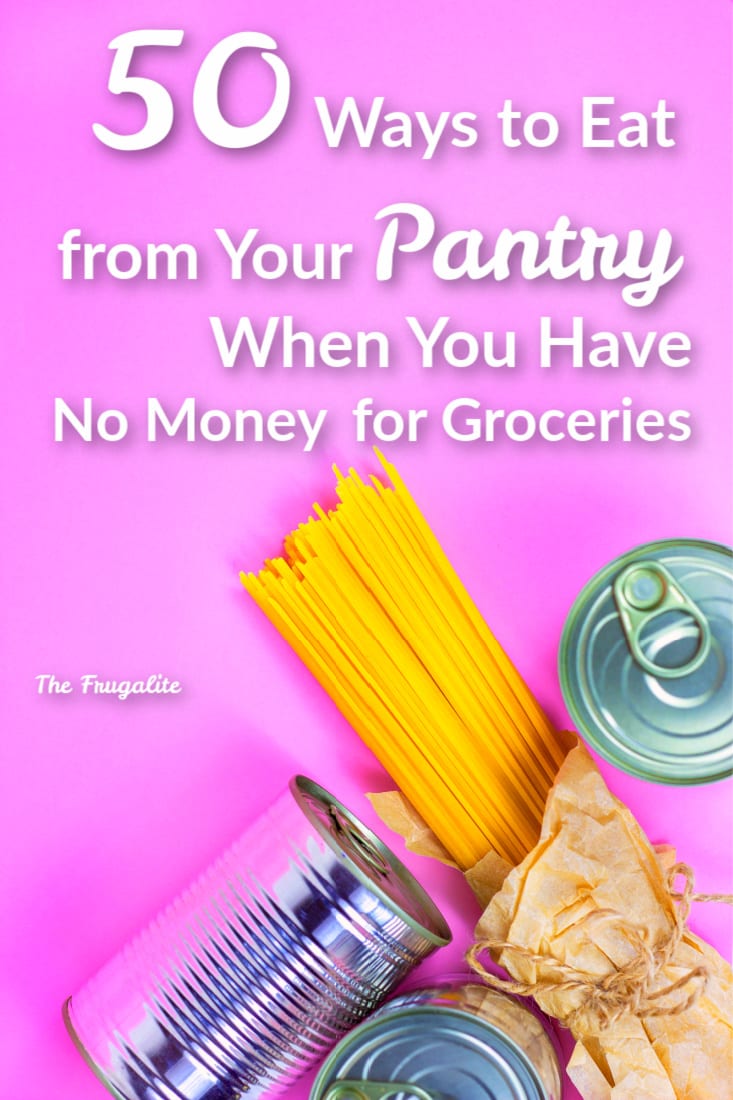

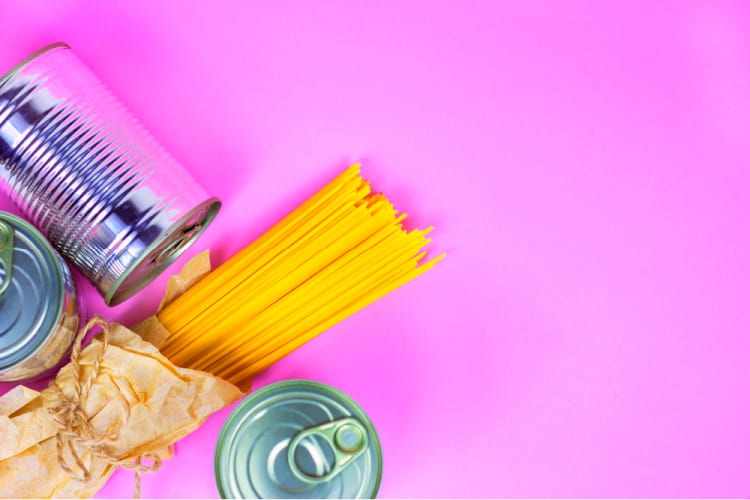

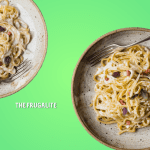


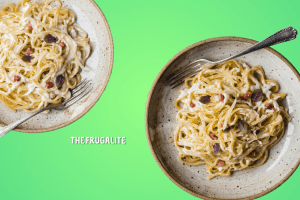
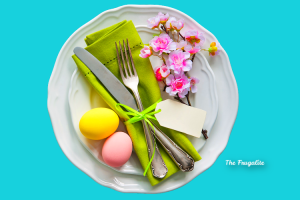
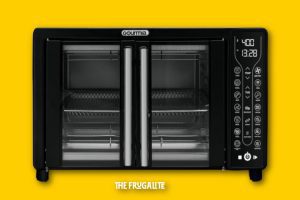


23 thoughts on “50 Ways to Eat from Your Pantry When You Have No Money for Groceries”
The Frugalite is a breath of fresh air. Enjoying it very much.
Thank you so much! I’m really glad to hear that!
My standard breakfast is dry oatmeal with yogurt added in. We buy the oatmeal in bulk and I make the yogurt at home. I figured the cost at somewhere around $0.75 per meal. As an added bonus I also get whey from making the yogurt which I drink over the course of the week as well as an additional snack.
Another favorite is homemade eggnog: 1 cu milk, two eggs, a pinch of sweetener, all blended. Cost is again around $0.75 er serving.
Wow, great timing because I just posted directions for making yogurt today!
I love this post! I completely agree that good prepping means making meals out of ingredients. I have always stocked ingredients, because I’m a terrible meal planner, and when it’s time for dinner, it will usually consist of whatever I have on hand. 🙂
Two questions:
1. Sweet and sour coleslaw?? Please share more.
2. Ideas on ways to eat the dozens of home canned jams, jellies, and preserves that don’t include bread. We’re GF and so we don’t eat a lot of bread.
I’m also interested in the coleslaw as I haven’t heard of canning that before!
A few ideas to use jams et all besides with bread …
Stir into a hot cereal like cream of rice (or into a rice pudding, which can be sweeter as a dessert or a bit less sweet as a breakfast)
Use it on Oopsie Rolls, which are GF because they are made mostly from egg and cream cheese
In a dessert like Salzburger Nockerln, which is basically an egg souffle – something like this but sub in a GF option for the small amount of flour https://www.epicurious.com/recipes/food/views/salzburger-nockerl-237201
On GF pancakes
I’ll get those added to the site this week! They’re both from my book “The Prepper’s Canning Guide” “_
Fruits or jams with yogurt. Jelly melted as a glaze on fruits, top a custard pie with melted jam or jelly. Jelly added to bbq sauce to sweeten it. Melt jelly as a glaze for strawberrys piled in a baked pie shell then top with whipped cream. Chill and serve.
This article is just what I was looking for. Thanks.
We’ve become masters of the “three ingredient meal”! Some time ago, there was a website where you could enter the three items you have, and it would offer suggestions on what you could make. It wasn’t particularly useful and we had a lot of fun coming up with bizarre items to see what it recommended. But it got us to thinking about what we could do with what was on hand, and we’ve become quite creative! Our current favorite go-to is the “Elementary School Lunch” – Kraft mac and cheese, a hot dog or two, and some mixed vegetables – for us, the ultimate affordable, satisfying comfort meal! Sheet cake and a glass of milk optional…
I have been experimenting with small size (8qt dishpans) filled with a layer of large gravel and a top layer of potting soil to grow greens and some herbs. It will be nice if this works out. We have a south facing window with 2 wire shelves my husband put up. In earlier years I was growing greens in flower boxes which worked out well in a sheltered area outside but this is the first time we have tried it inside.
Re: Gluten Free, even a small amount of wheat flour can aggravate gluten sensitivity. We eat a lot less bread and a lot more corn and potato chips, tortillas, rice, potatos, quinoa, breads made with corn meal and gluten free flour. GF flour is pricey but nice to have for a treat, better than trying to buy GF products ready made.
we aren’t GF but rice flour and corn meal make a good cornbread. My mother made a good corn meal, rasin, sugar, water and egg cookie. I wish i had her recepie.
I used to put blueberries in mine instead of raisins. Just delicious!
While I consider myself frugal & (mostly) stretch a $$ pretty far, I can not can certain foods due to my personal health reasons–but my family enjoys. So I look for sales on these canned/jarred items, usually $1-$2/each & get usually dinner & some leftovers from each meal. My family takes lunch daily & the season we are in definitely contributes to our food consumption.
Luckily we usually only eat 2 meals & snack/day, even with teenager.
Growing up poor we ate johnny cake (crumbled cornbread w/ sprinkled sugar & pour mild over) & hot dog & mashed potato w/ cheese layered casseroles. Bread from day old bread store or frozen bread dough used to make baked goods.
In michigan we experienced food shortages, more than few months during covid, & found that frozen bread dough ($1/each) can be quite versitle, especially when no bread or dry ingredients available. Crush corn flakes (cereal) makes great planko/breading for coating meats.
(Whole grain) Cereal is a staple in our house, eaten anytime. My husband always questions why I buy cereal when have 5 boxes already at home. But at $1/box, I store in plastic bins in pantry.
We are eating from our pantry at the moment for the next few weeks, I’ll make our Christmas cake & plum pudding from scratch and already brought our meat marked down to 50% off frozen. Veggies were all on sale blanched & frozen and the rest will be from our little garden.
I’ve brought your book about six months ago and a pressure canner but I’m so nervous about it, I haven’t used it yet. I have no idea what sea level we are at either , it’s all a bit daunting and we have a lot going on , it’s been put on the back burner. We already have my homemade bread , cakes, biscuits they we are used to, I’ll I brought was cheese ,butter and cream this week. Today I’m making up the mixes for the crackers , rolls, pancakes etc to save time . This is the last year I’m feeding the extended family, I can’t afford it money wise and it takes so much time away from my children who need me. And my family doesn’t really appreciate it, they say they do but at the core they have no clue , how I make it happen , everything is homemade
Izzy, if you do a google search of “What is the altitude at *your street, your city, your state*?” you should get that information pretty easily 🙂
Thanks Daisy, I’ll have a look. I’m just so nervous, and no one I know , has a clue about them.
I think everyone is a nervous wreck the first time they pressure can. I recall clear concern that I was about to blow up my house and put the dogs outside and waited until the kids were in school so I’d only blow up myself.
Canning for 10 years now and I’ve still got all my digits 🙂 It’s a lot harder to have an accident pressure canning than people think. Most accidents are caused by one of two things:
1) Your petcock (the little round doohickey that goes on top once it starts steaming) is blocked and too much pressure builds inside the pot. Simply hold the doohickey up to the light and make sure it’s all clear.
2) You try to force the lid off before the pressure is gone. If you try to open your lid because the pressure shows it has dropped to zero and the lid doesn’t want to come off, leave it alone. It won’t hurt your jars one bit to sit in there for extra time or even overnight if it makes you feel better. I used to time it where I turned off the heat just in time to go pick up my kids from school, which gave me about an hour and a half to let it sit there and cool.
There’s actually a third option – if you have a very old canner, it could malfunction. But it sounds like yours is new and new ones have all sorts of safety measures built in to keep 1 and 2 from occurring.
After you’ve done it once, you’ll be so glad!
This article nails it. I have lived off bagels and survived. Been there and done that. I buy Bisquick for baking because it has all the ingredients except milk, water and eggs. I just took inventory of my food stash.
Today was my first trip into town in a month. We eat from the pantry while on covud l9 lock downs. I bought 2 gallons of miIk, 1 can milk and a large bag of powdered milk, a quart of applesauce, marked down cupcakes for hubs, canned fruit, red enchilada sauce, sharp cheddar cheese, a plain yogurt for starter, 4 lbs real butter to can, a can of refried beans, a bag of 10 frozen beef and bean enchiladas, and some sugar free candy for a friend. I wanted milks, cheese and yogurt. 2 large cans of yams were on sale $1 each. The rest was just to add quick food or more seasoning variety. I keep a pretty well stocked pantry. I had to go to town for a perscription and filled 2 propane bottIes.
Dinner was a quickly made medium pizza topped with mozzarella, frozen peppers, onions, pepperoni, and black olives. Sauce was left from a homemade sauce made from canned tomatoes, olive oil and Italien herbs. And hour later we had milk, cherry pie, then coffee to help me finish thawing out…. below freezing all day and no heat in the car. Wood heat feels good this evening.
Once you have a basic pantry set up, it’s best if you can stop bringing home ready made meals and things you just heat up such as chicken strips or TV dinners. I used to have a lot of my canned goods expiring until I realized that the ready made things I was buying kept me from utilizing my pantry fully. Since last March I have cooked all our meals and I make bread 2-3 times a week. We shop online, mostly to replace the pantry items we’ve used, and use the store “pick up” every couple of weeks so we don’t have to go into stores. We really want for nothing even though we haven’t eaten out or had take out since March. Fast food at our house is when I pull something out of the freezer that I have previously cooked and froze. I still cook extra and freeze for a second meal. I make cookies, pies, sweet rolls, and homemade corn bread. (And like Regina above, we crumble the corn bread and eat it with sugar and milk. That’s the way I was brought up as well.) Once you start eating from your pantry you start to realize how quick you can get a meal prepared. That pantry is a great comfort to me because it is an asset I can depend on to feed us for quite awhile if things go south. We will be ok.
Thanks, Daisy, for the pressure canning pep talk. I have been afraid of taking the plunge but have always wanted to try. My daughter has a whole pantry of canned goods she put up for her family and I’m jealous! This summer I believe I’m going to jump in and can from my garden.
I enjoyed this article and the comments as well! I’m really enjoying this site Daisy.
Growing up my Mom had to be very frugal as my Dad was in USAF. Monthly we had macaroni & Hamburger with tomatoes, sometimes it was only macaroni w/ tomatoes (I still eat these for lunches often!) Tuna & peas in white sauce on toast, sometimes it was just white sauce w/peas (or tuna) on toast. When my kids were growing up, I also used these meals as well as Macaroni salad with whatever veggies & meat we had. Also what my kids dubbed “Moosh”, mashed potatoes (usually leftover) mixed with butter, onion, any leftover veggie & meat, usually with Green peppers & mushrooms and any cheese we had. I make this for my lunches now & then. It is a GREAT way to use up leftovers & stretch them out.
When covid struck, we ate mainly from our fridge, pantry & freezer for the first 3 months, my Husband did stop at a store on his way home from work to pick up fresh veggies, milk & cheese for the week.